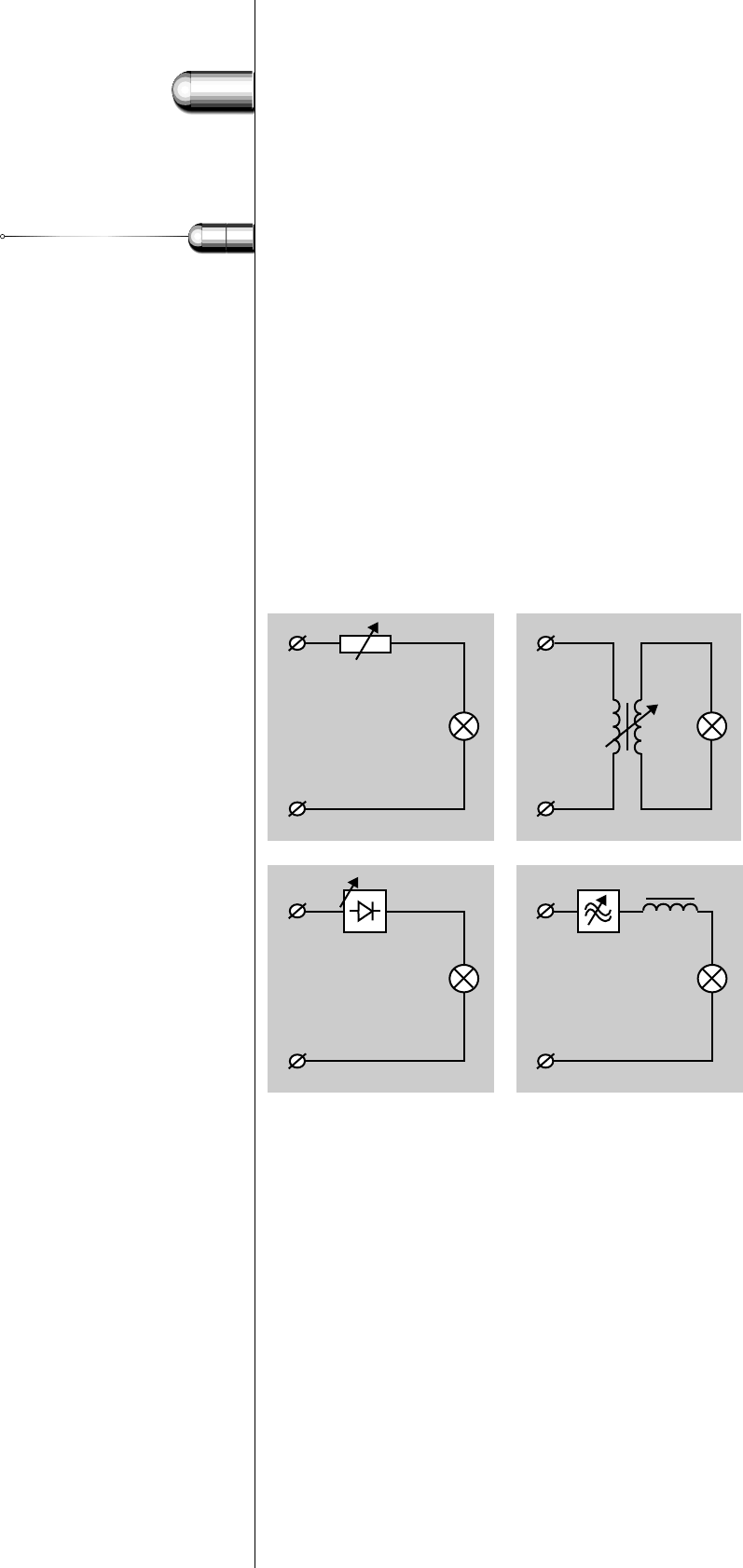
Dimming
Dimming can be defined as the reduction of the luminous flux of a lamp,
either continuously or in steps, by reducing the operating current.This
is not always possible without adversely affecting the performance of
the lamp.
Basically,dimming is achieved in one of the following ways (see Fig.134):
- by switching a (variable) resistor or inductive coil in series with the
lamp(s),
- by running the lamp(s) from a variable transformer,
- by suppressing the AC waveform of the supply current during part of
the cycle by means of an electronic element (thyristor); such a device
is also called a ‘chopper circuit’,
- by increasing the frequency of the supply current of an inductive
coil, thereby increasing the impedance of this.
Resistors are now rarely used for dimming purposes, because they
are inefficient and produce a lot of heat.
Variable transformers are appreciated because of their high power
handling capacity,but at the same time they are heavy and expensive.
In the case of fluorescent lamps operated on electromagnetic gear
dimming is mostly achieved by the extra inductive coil in series or by
the thyristor circuit (Fig. 135). In both cases only inductive circuits are
allowed and the parallel compensating capacitor must be placed before
the dimming device. Capacitive or duo-circuits are not allowed because:
- with the extra series impedance the total impedance for stabilising
would become lower instead of higher,
316
5
140
Fig. 134. Four basic ways of dimming.
a) by a variable resistor,
b) by a variable transformer,
c) by a thyristor circuit,
d) by frequency regulation.
3.16 Dimming
L
N
L
N
a)
c) d)
b)
L
N
L
N


















